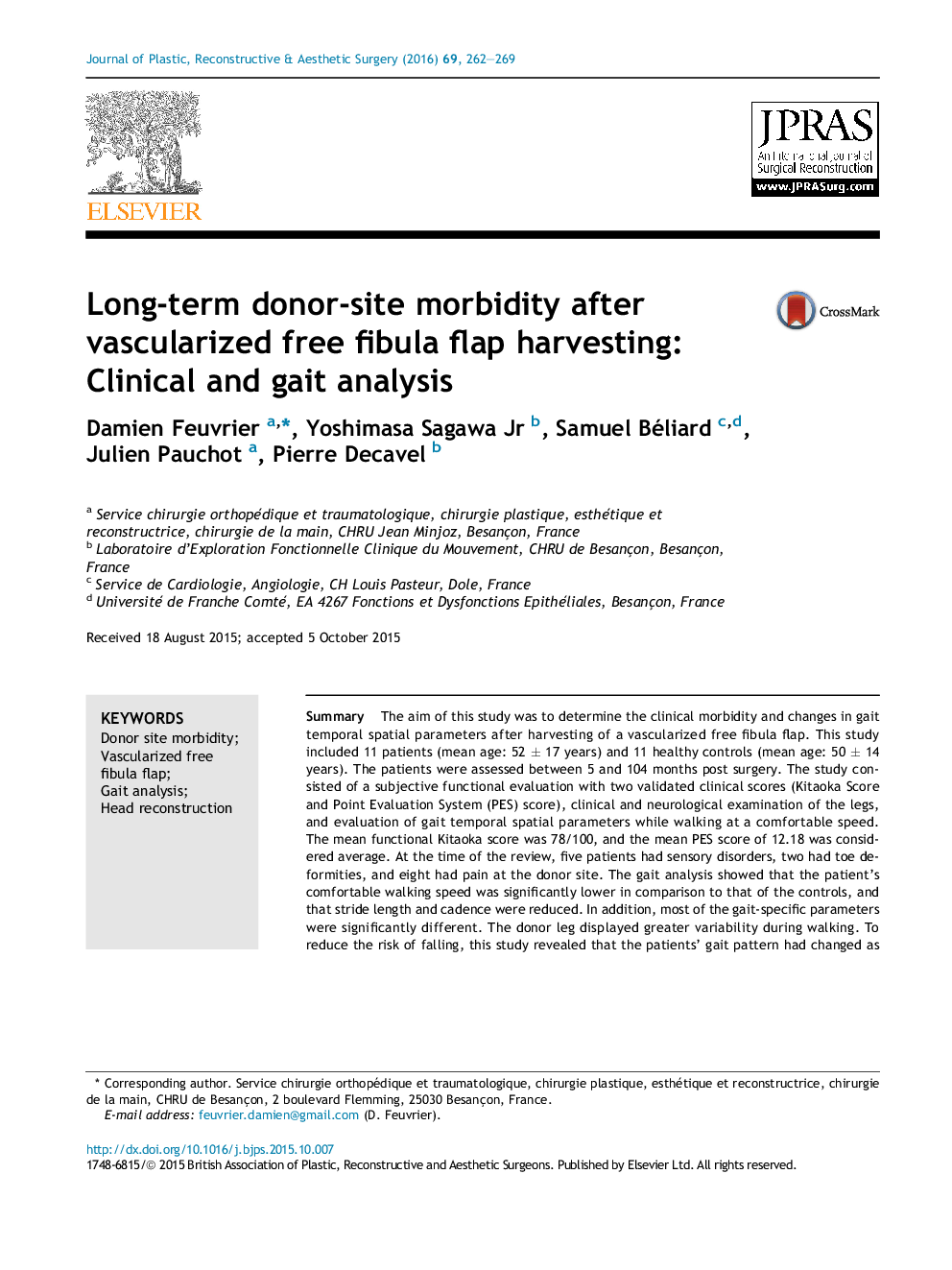| Article ID | Journal | Published Year | Pages | File Type |
|---|---|---|---|---|
| 4117324 | Journal of Plastic, Reconstructive & Aesthetic Surgery | 2016 | 8 Pages |
SummaryThe aim of this study was to determine the clinical morbidity and changes in gait temporal spatial parameters after harvesting of a vascularized free fibula flap. This study included 11 patients (mean age: 52 ± 17 years) and 11 healthy controls (mean age: 50 ± 14 years). The patients were assessed between 5 and 104 months post surgery. The study consisted of a subjective functional evaluation with two validated clinical scores (Kitaoka Score and Point Evaluation System (PES) score), clinical and neurological examination of the legs, and evaluation of gait temporal spatial parameters while walking at a comfortable speed. The mean functional Kitaoka score was 78/100, and the mean PES score of 12.18 was considered average. At the time of the review, five patients had sensory disorders, two had toe deformities, and eight had pain at the donor site. The gait analysis showed that the patient's comfortable walking speed was significantly lower in comparison to that of the controls, and that stride length and cadence were reduced. In addition, most of the gait-specific parameters were significantly different. The donor leg displayed greater variability during walking. To reduce the risk of falling, this study revealed that the patients' gait pattern had changed as they took a more cautious approach during walking. Early rehabilitation is expected to help improve and/or restore the physical abilities of patients after harvesting of the vascularized free fibula flap.
